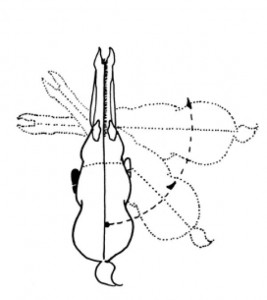Classical Dressage – Turn on the Forehand
What is a turn on the Forehand
The turn on the forehand is used:
- To develop a young horse and teach them how to move away from the riders leg
- As an introduction to lateral movements
- A strengthening exercise.
When performing the turn on the forehand the horse moves sideways and slightly forward so the inside hind steps up and under the horses body. The horse almost pivots on its front leg while its hind legs make a circle around its front legs.
The aids for a Turn on the Forehand
From a halt the horse should be slightly flexed to the inside. The horses right nostril, for example should be infront of his right shoulder, or just enough to see the inside corner of the horse’s eye.
The inside leg is slightly behind the girth to actively ask the horse to move sideways.
The inside rein asks for enough flexion to see the inside corner of the horse’s eye.
The outside leg is slightly behind the girth and is passively holding the horse to prevent the horse from moving too quickly.
The outside rein is for support and prevents the horse from walking forward.
Corrections for the Turn on the Forehand
If your horse moves forward too much, squeeze the outside rein to prevent the horse from walking away. This also prevents too much inside flexion. To avoid the horse from walking away, begin the turn on the forehand at a 90 degree angle to a fence or arena wall and do a quarter turn on the forehand.
If you feel your horse begin to move backward then squeeze actively with both legs to prevent the horse from backing up.
If may take a few tries before your horse understands what is being asked from you. Keep trying and reward your horse often by patting him on the neck.

 Try these three powerful exercises to get strengthen your position.
Try these three powerful exercises to get strengthen your position.

Good post.
Your site looks really great! Very useful information.
thanks Carol. I have had a few hiccups with the site… I lost some of the back ground colour but thank you for noticing.